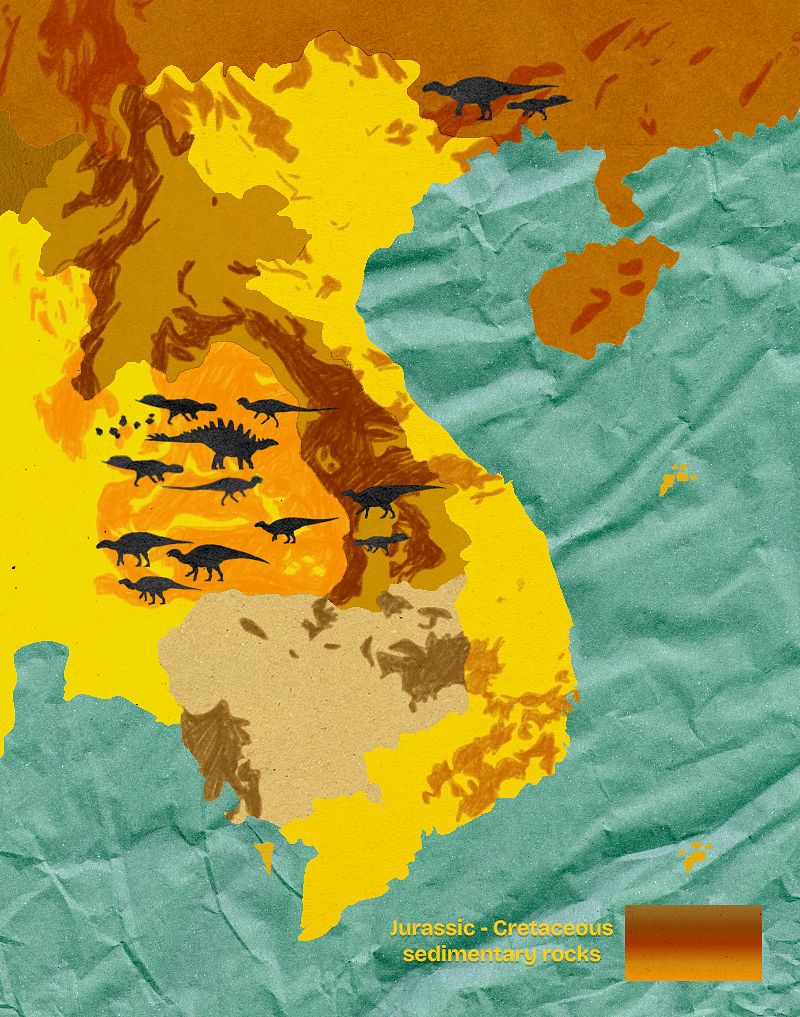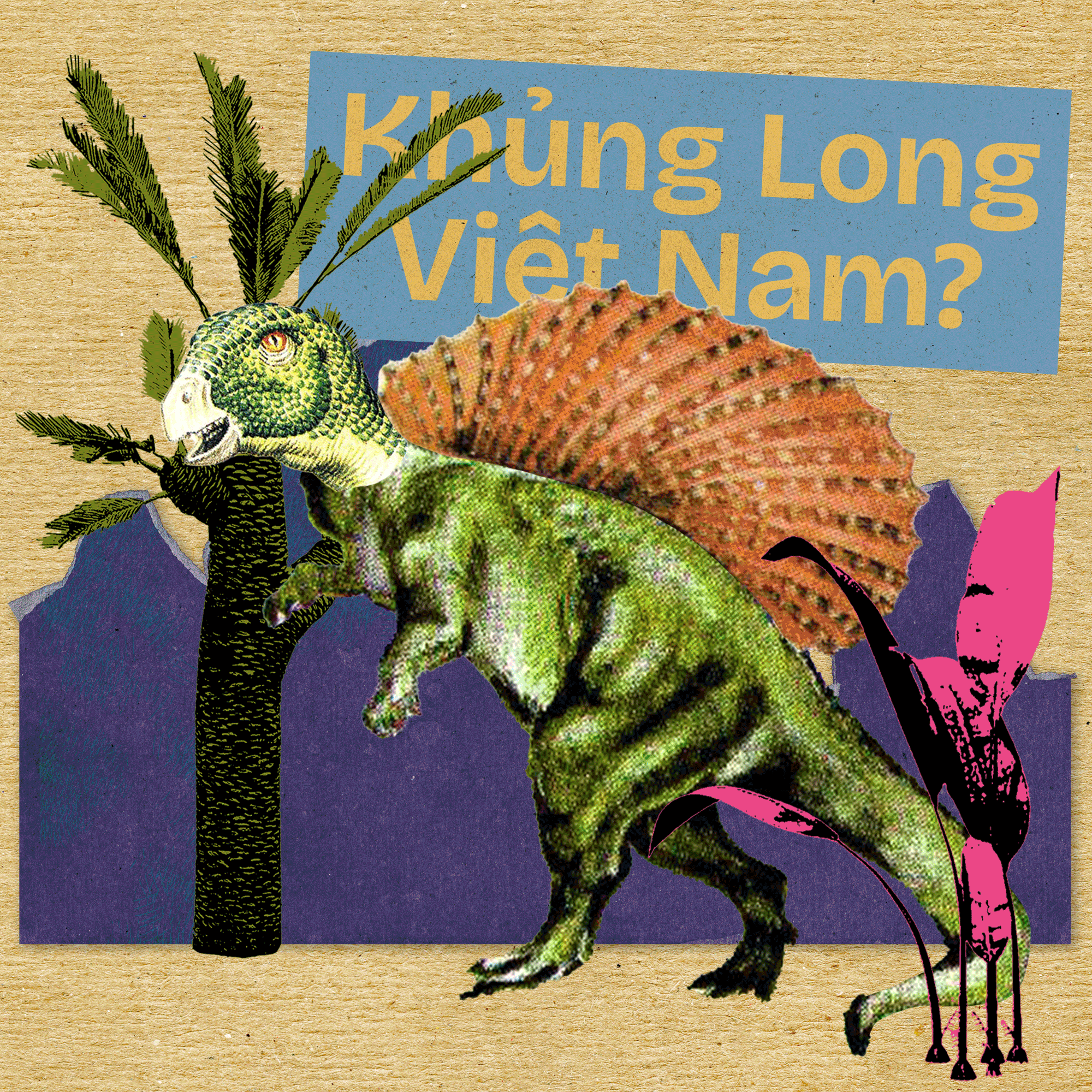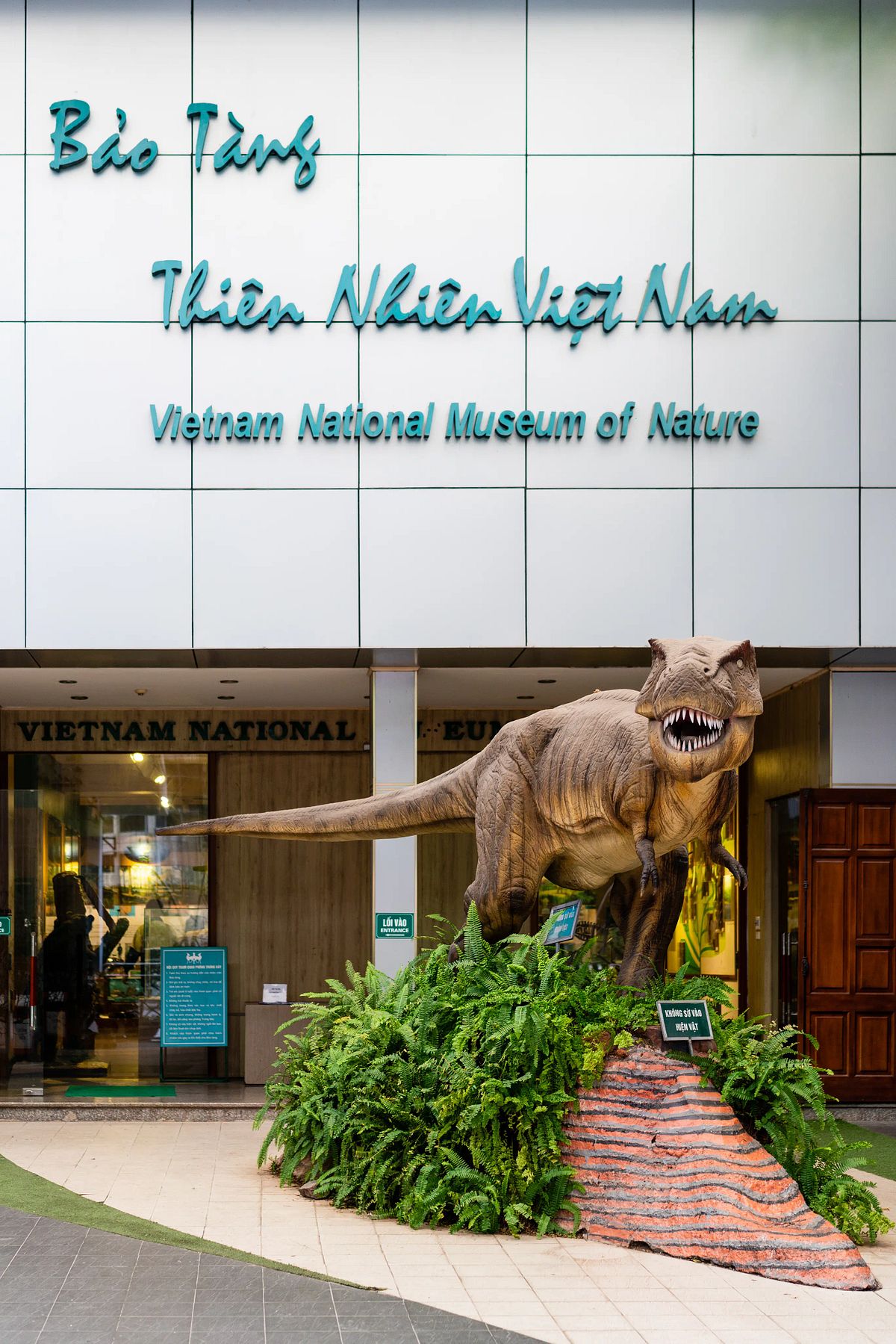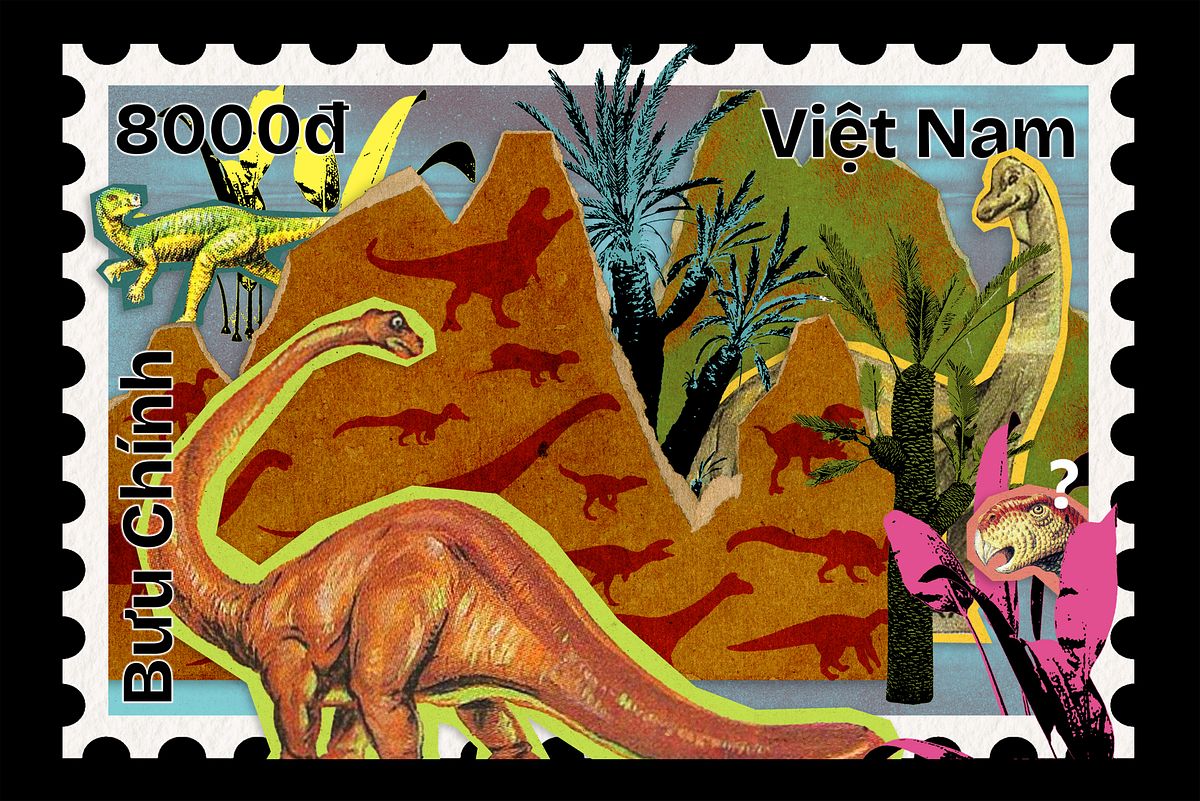Why aren’t there any Vietnamese dinosaurs?
Well, Vietnam probably was home to dinosaurs; we just haven’t found their fossilized bones yet.
Scientists have uncovered fossilized remains of these beloved prehistoric animals in Thailand, Malaysia, Laos, Cambodia, and Myanmar, but not Vietnam. In the last few decades, the Southeast Asian discoveries have included a great range of species representing many familiar groups, including Spinosaurus, Titanosaurus, and Iguanodon in their membership. Clustered around the middle period of dinosaurs’ 165-million-year reign, the late Jurassic and early Cretaceous species have greatly expanded our understanding of dinosaur variety and distribution.

Map of current ornithischian dinosaur finds in mainland Southeast Asia. Information adapted from this scientific paper.
So why haven’t any been found in Vietnam yet? It all comes down to luck and money. Many of the region’s discoveries were the result of happenstance and activities unrelated to paleontological searches, including a chance sighting in a Northern Thai ignite mine and a bone exposed at low tide on the coast of a Cambodian island. The uncovering of these fossils frequently results in cross-national partnerships, most notably between Thailand and Japan, wherein foreign scientists provide knowledge and financial resources to further global understanding of dinosaurs.

Editor's note: Dinosaurs images adopted from Vietnam's released stamp collection and not illustrative of actual findings.
Unfortunately, there have been no such fortuitous findings in Vietnam, and without at least a clue for where to look, costly surveys are difficult to justify. The few expeditions to find dinosaurs over the years, led by mostly Hanoi-based geologists, have unfortunately come up empty-handed. The most recent search, a collaboration with Japanese paleontologists, explored Lạng Sơn and Sơn La and found fossiliferous rocks of the correct age, but no dinosaurs. So while geologists can confirm that dinosaur ecosystems existed in Vietnam based on rock formations, we are left waiting for further expeditions, a construction project or a sharp-eyed forest hiker to notice a unique rock that lures scientists. Experts suggest Quảng Bình is the most likely spot one will be identified.

Photo by Alberto Prieto.
Despite not yet having a dinosaur to call its own, Vietnam has shown an appreciation for these “terrible lizards (khủng long).” Several times since 1976, Vietnam has issued stamps featuring dinosaurs, maintains Tangvayosaurus material at the Hanoi Geological Museum, and a large dinosaur statue looms in front of the capital’s National Museum of Nature, revealing an understanding of how dinosaurs capture the public interest. One need only browse a toy store here to understand that Vietnamese children, like children everywhere, agree that dinosaurs are very cool. And this is why it matters that Vietnam finds one. If young people learned that there was a species with a Vietnamese name, found in a familiar province by people who speak their language, an appreciation for paleontology and science in general would surely increase. Future generations, at least a portion of them, might develop greater reverence for a natural world that thrived before people evolved, and hopefully will continue to do so long after us.















